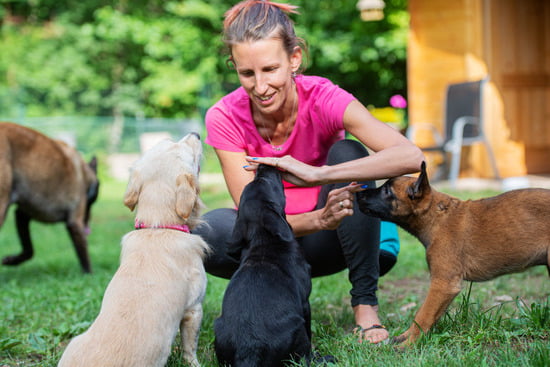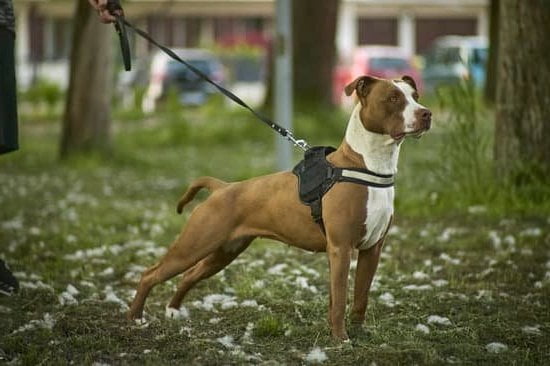Training a dog is an essential aspect of responsible pet ownership. Whether you have a new puppy or an older dog, proper training can help create a harmonious and well-behaved pet. Understanding the importance of training is the first step in fostering a strong relationship with your furry friend. It involves teaching them basic commands, addressing behavioral issues, and even preparing them for specific purposes such as service or therapy work.
When it comes to training a dog, choosing the right method is crucial. Positive reinforcement techniques focus on rewarding good behavior, while punishment-based methods involve correcting unwanted behavior. Each approach has its pros and cons, and it’s important to select the method that best suits your dog’s personality and needs.
One of the key aspects of successful dog training is setting realistic goals and managing expectations. Building a strong bond with your dog plays a significant role in successful training. By understanding these fundamentals, you can lay a solid foundation for effective training sessions and ensure that both you and your dog enjoy the process.
Choosing the Right Training Method for Your Dog
When it comes to training a dog, choosing the right training method is crucial for their development and well-being. Positive reinforcement and punishment are two of the most common methods used in dog training, and understanding the differences between the two is essential for successful training.
Positive reinforcement focuses on rewarding desired behaviors with treats, praise, or toys. This method encourages dogs to repeat good behavior in order to receive positive outcomes. On the other hand, punishment involves applying consequences for unwanted behaviors, which can include verbal reprimands or physical corrections. It’s important to note that while both methods can be effective, positive reinforcement has been proven to be more successful in creating long-lasting behavioral changes without causing stress or fear in dogs.
When deciding which training method is best for your dog, it’s important to consider your dog’s personality and temperament. Some dogs respond well to positive reinforcement and thrive on rewards for good behavior, while others may need firmer boundaries and consistent discipline through punishment. It’s essential to assess your dog’s individual needs and consult with a professional trainer if you’re unsure which method is suitable for your dog.
Ultimately, choosing the right training method for your dog sets the foundation for a strong relationship based on trust and mutual respect. By using positive reinforcement techniques, you can foster a healthy and lifelong bond with your furry companion while achieving successful training outcomes that benefit both you and your dog.
Setting Realistic Training Goals
When it comes to training a dog, setting realistic goals and managing expectations is crucial for success. Every dog is unique and may learn at a different pace, so it’s important for dog owners to understand what can be realistically achieved within a certain time frame.
Understanding Your Dog’s Abilities and Limitations
Before embarking on any training regimen, it’s essential to have a clear understanding of your dog’s breed, age, and temperament. Some breeds may be more predisposed to certain behaviors or may require specific training techniques. Additionally, it’s important to consider your dog’s individual personality and any past experiences that may impact their ability to learn certain behaviors.
Consistency Is Key
One of the most important aspects of successful dog training is consistency. Setting realistic training goals requires a commitment to regular training sessions and maintaining consistent expectations. Dogs thrive on routine and will respond best when they know what is expected of them. Consistently reinforcing desired behaviors and providing positive reinforcement will help your dog understand what is being asked of them.
Patiently Nurturing Progress
Training a dog takes time and patience. It’s important for dog owners to recognize that progress might not always be linear-some days may show significant improvement while others may feel like setbacks. Setting realistic goals means acknowledging that there will be ups and downs in the training process. Celebrating small victories along the way can help keep both the owner and the dog motivated as they work towards achieving their larger training goals.
By understanding your dog’s abilities, staying consistent in your approach, and remaining patient throughout the process, you can set realistic training goals for your pet that are attainable and rewarding for both of you.
Building a Strong Bond With Your Dog
One way to build a strong bond with your dog is through regular exercise and playtime. Taking your dog for walks, playing fetch, or engaging in other physical activities not only helps keep them physically fit but also creates opportunities for bonding. Additionally, spending quality time with your dog through grooming, cuddling, and simply being present in their day-to-day routine can strengthen your relationship.
Another important aspect of building a strong bond with your dog is maintaining consistency in your interactions. Dogs thrive on routine and predictability, so establishing consistent rules and boundaries can help them feel secure and connected to you. Consistency in training also creates clear communication between you and your dog, making it easier for them to understand what is expected of them.
Furthermore, positive reinforcement techniques such as giving treats, praise, or affection when they display desired behaviors can help foster a stronger bond. This positive association with training will make the experience enjoyable for both you and your dog. By building a strong bond based on trust and positive experiences, you are setting the foundation for successful training outcomes.
| Aspect | Importance |
|---|---|
| Regular exercise and playtime | Physical fitness and bonding opportunities |
| Consistency in interactions | Security and clear communication |
| Positive reinforcement techniques | Fosters trust and enjoyable training experiences |
Training Tools and Equipment
When it comes to training a dog, having the right tools and equipment can make a significant difference in the effectiveness of your training sessions. Here are some essential items that every dog owner should consider investing in:
- Collars: Collars are a fundamental tool for training and controlling your dog. Whether you choose a standard buckle collar or a martingale collar, it’s essential to find one that fits comfortably and securely.
- Leashes: A sturdy leash is crucial for teaching your dog proper walking etiquette and maintaining control in public settings. Retractable leashes can be beneficial for certain types of training, but be sure to use them with caution.
- Clickers: Clicker training has become increasingly popular due to its effectiveness in reinforcing positive behaviors. By associating the sound of a clicker with rewards, you can communicate more precisely with your dog during training exercises.
In addition to these basic tools, there are various other training aids available on the market, including harnesses, treat pouches, and interactive toys designed to stimulate mental engagement. While some tools may be more suitable for specific breeds or training methods, it’s essential to do thorough research and consult with a professional trainer before making any significant purchases.
Ultimately, the goal of using training tools and equipment is to facilitate clear communication between you and your dog while creating a safe and supportive learning environment. When used thoughtfully and responsibly, these items can help reinforce positive behavior and build a strong foundation for obedience and discipline in your canine companion.
Basic Commands Every Dog Should Know
Training a dog is an essential part of owning a pet. Understanding the importance of training is crucial for both the well-being of your dog and for the harmony of your household. A well-trained dog is less likely to exhibit behavioral issues, more pleasant to be around, and can even be involved in specific tasks or activities such as therapy work or search and rescue.
When it comes to training a dog, one of the first steps is teaching them basic commands. Sit, stay, come, and heel are fundamental commands that every dog should know. These commands not only make your daily interactions with your pet smoother but can also be life-saving in certain situations. For example, having a reliable “come” command can prevent your dog from running into dangerous traffic or getting lost.
Positive reinforcement has been widely recognized as the most effective method for training a dog. This involves rewarding your pet for good behavior rather than punishing them for their mistakes. Using treats, praise, and toys as rewards can encourage your dog to learn and obey commands more willingly. It creates a positive association with training and strengthens the bond between you and your furry companion.
| Training Method | Effectiveness |
|---|---|
| Positive Reinforcement | Highly Effective |
| Punishment-based Training | Less Effective and Can Lead to Behavioral Issues |
Addressing Behavioral Issues
When training a dog, it is crucial to address any behavioral issues that may arise. Whether it’s aggression towards other dogs or humans, excessive barking, or jumping up on people, these behaviors can disrupt the training process and even pose a danger to those around your dog. By understanding and addressing these issues, you can create a harmonious relationship with your pet.
Here are some common behavioral issues in dogs and how to address them:
1. Aggression: Whether it’s fear-based or territorial, aggression in dogs can be dangerous if not addressed properly. It’s important to consult with a professional trainer or behaviorist to determine the root cause of the aggression and develop a plan to modify this behavior through positive reinforcement techniques.
2. Barking: Excessive barking can be a nuisance for both you and your neighbors. To address this behavior, identify the triggers that cause your dog to bark excessively and work on desensitizing them through counter-conditioning and positive reinforcement.
3. Jumping Up: Many dogs have a tendency to jump up on people as a form of greeting or seeking attention. This behavior can be managed by teaching alternative greetings such as sitting or offering a paw, while also rewarding calm behavior when meeting new people.
By addressing these behavioral issues with patience and consistency, you can create a well-behaved and well-adjusted companion through effective training methods.
Advanced Training Techniques
Agility Training
Agility training is a popular and fun way to challenge your dog both mentally and physically. It involves navigating an obstacle course with jumps, tunnels, weave poles, and more. This type of training not only helps to improve the dog’s physical fitness but also fosters quick thinking and problem-solving skills.
Some dogs naturally excel at agility while others may need more time to develop their skills. Regardless, agility training can be a great bonding experience between you and your furry friend.
Obedience Training
Obedience training is essential for creating a well-behaved and manageable dog. This type of training focuses on teaching your dog basic commands such as sit, stay, come, down, and heel. Obedience training requires consistency and patience from the owner but can ultimately lead to a better relationship with your pet. It is important to start obedience training at a young age to instill good behavior habits early on.
Trick Training
Trick training goes beyond basic commands and adds an element of fun and entertainment for both the dog and the owner. Teaching your dog tricks such as rolling over, playing dead, or high-fiving not only showcases your dog’s intelligence but also strengthens the bond between the two of you. Trick training can also serve as mental stimulation for your dog which is important for keeping them engaged and happy.
As you delve into advanced training techniques such as agility, obedience, and trick training, it is important to remember that every dog learns at their own pace. Be patient, persistent, and always use positive reinforcement when embarking on these advanced training methods with your canine companion.
Training a Dog for Specific Purposes
In conclusion, training a dog is a crucial aspect of building a strong and positive relationship with your pet. It is essential to understand the importance of training in order to ensure that your dog is well-behaved, obedient, and able to fulfill specific purposes if needed. Choosing the right training method, such as positive reinforcement over punishment, is key in creating a happy and eager-to-learn canine companion.
Setting realistic training goals is also important as it allows for gradual progress and avoids frustration for both the owner and the dog. Building a strong bond with your pet is essential for successful training, as it fosters trust and cooperation. Utilizing effective tools and equipment, such as collars and clickers, can aid in the training process and make it more efficient.
Moreover, knowing basic commands like Sit, Stay, Come, and Heel are fundamental for any trained dog. Additionally, addressing behavioral issues like aggression, barking, or jumping up requires patience and consistent training techniques.
Finally, advanced training techniques can be employed for agility, obedience competitions, or even teaching tricks for mental stimulation. Overall, whether you are training a dog for specific purposes such as service dogs or therapy dogs; or simply for companionship and obedience – proper training is essential for a well-rounded pet who can bring joy to you every day.
Frequently Asked Questions
What Are the 5 Golden Rules of Dog Training?
The 5 Golden Rules of Dog Training are consistency, positive reinforcement, patience, understanding the dog’s behavior, and using clear communication. Consistency is key in reinforcing good behavior and avoiding confusion.
What Are the 7 Most Important Dog Commands?
The 7 most important dog commands are sit, stay, come, down, heel, leave it, and off. These commands are essential for effective communication with your dog and ensuring their safety and obedience.
What Are the 5 Steps to Train a Dog?
The 5 steps to train a dog involve setting clear goals, establishing a routine, using positive reinforcement, being patient and consistent, and seeking professional help if needed. Training takes time and dedication but can strengthen the bond between you and your dog.

Welcome to the blog! I am a professional dog trainer and have been working with dogs for many years. In this blog, I will be discussing various topics related to dog training, including tips, tricks, and advice. I hope you find this information helpful and informative. Thanks for reading!





